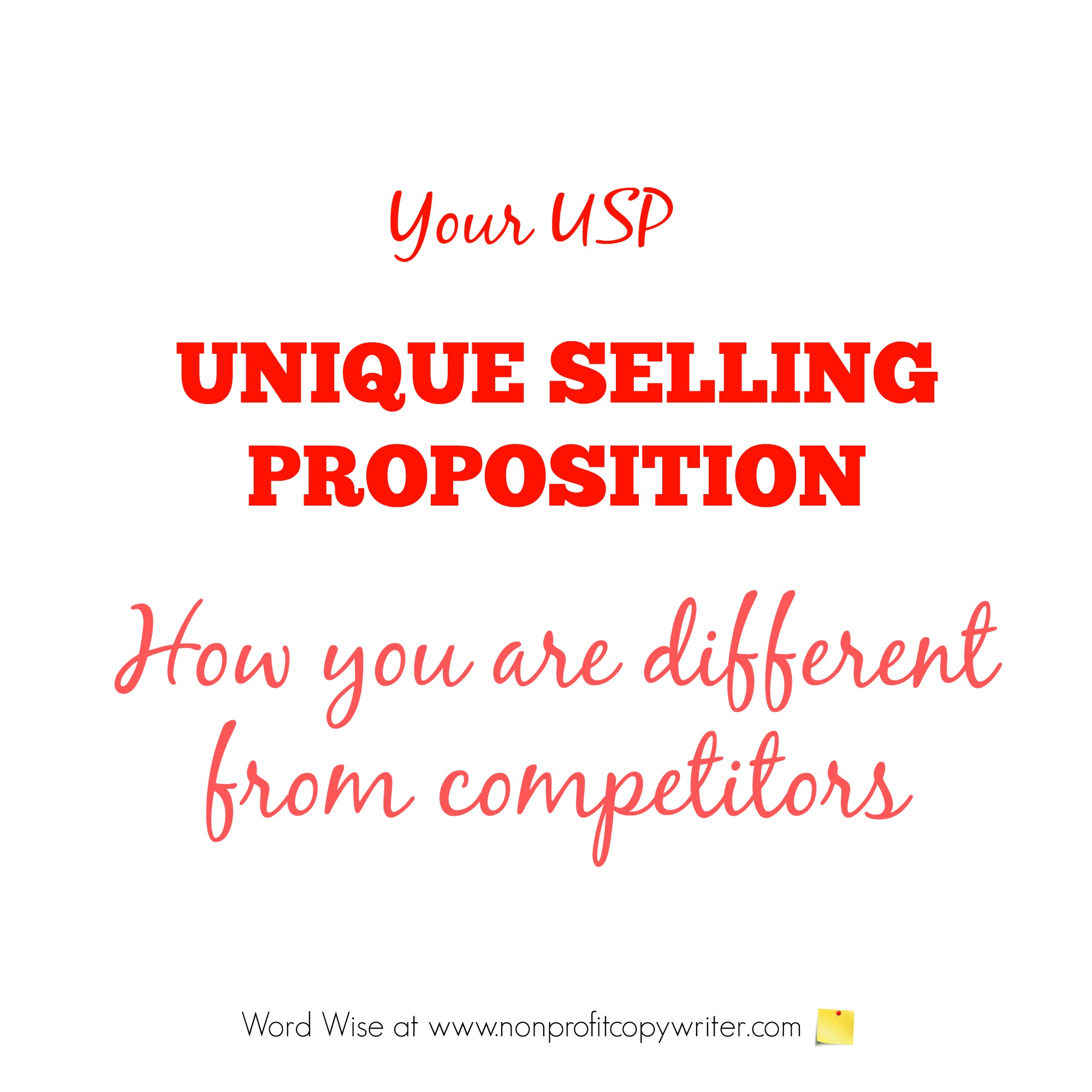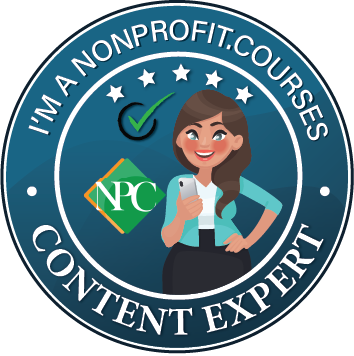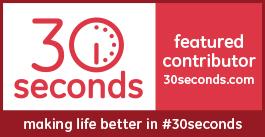Save Time: Get 5 Simple Writing Tips
you can put to use in 10 minutes
USP: Your Unique Selling Proposition
Award-winning writer Kathy Widenhouse has helped hundreds of nonprofits and writers produce successful content , with 750K+ views for her writing tutorials. She is the author of 9 books. See more of Kathy’s content here.
Updated 12.13.2023
38 Ways You Are Unique
Your USP – Unique Selling Proposition or Unique Selling Point – is what makes you different from other organizations. It's also sometimes called your "Competitive Advantage."
“I want to show the reader that my nonprofit stands out,” my client said as we discussed an upcoming fundraising letter. “He’ll want to invest in us because he sees how effective we are – that we meet a need that he cares about – and that we’re different than anyone else.”
Without realizing it, my client nailed THE most critical principle in successful promotion: identifying his USP.
Today’s consumer is constantly bombarded with opportunities to plunk down his hard-earned cash. Why should he hire you … buy your product … contribute to your cause over anyone else’s? Your USP distinguishes you from other groups and shows that your services are the one that fills a particular niche or meets a particular need.
Use a Checklist to Find Your Distinctives
With each new client, I ask the questions below to get a sense of why his organization is so special. And it pays off. One client revealed that his group is the only vocational institution for impoverished Christian students in a particular Asian country. Armed with that information, we were able to set up a one-on-one sponsorship program, connecting individuals and churches to my client’s students overseas and opening up all kinds of new donor possibilities.
Your USP can be as simple as you are the only provider in the local area that offers personalized service delivered on time.
Start by using the checklist below to help you compile a list of your distinctives. (You can also download your own copy of the checklist here.)
Your USP Checklist
Your Distinctives Compared with Other Providers
1. How are you different from your closest competition?
2. What additional services do you provide that others don’t?
3. What services are better than your competition?
4. What services are more effective than your competition?
5. How do you offer a competitive price/value for your services?
6. How do you excel in quality?
Your Niche
7. What physical needs do you meet?
8. What emotional and spiritual needs do you meet?
9. How do you meet those needs in a special way?
10. What specific/timely event(s) do you address?
Your Demographic Distinctives
11. What product or service do you offer to a certain geographical radius?
12. What particular age group, gender ,or income level do you serve?
13. What secondary demographic group do you serve?
Your Service Distinctives
14. In what ways are you known for their personal, courteous, go-the-extra mile service?
15. What kinds of contact methods do you offer (website, 24/7 hotline, toll-free number, e-mail, social media)?
16. What advice and technical support do you offer?
17. What confidentiality services do you offer?
18. How fast can you deliver information or answer an inquiry?
19. What range of services do you offer?
20. In what other ways do you excel in customer service?
Your Offers and Deals
21. What special incentives do you offer?
22. What unique, special premiums or information products do you offer?
23. What different seasonal specials do you offer?
24. What value-added incentives do you offer? (free information, newsletters, complimentary services)
Your Personal Distinctives
25. How do your special skills make you more attractive?
26. How do your unique training, experience, or story enhance your services?
27. How does your passion or excitement impact your product and services?
Your Track Record
28. How long have you successfully been in operation?
29. If you are new, how do you explain your success in such a short time?
30. What are your outcome statistics?
31. What are your client satisfaction statistics?
32. What do others say about your organization?
33. What endorsements can you share?
Your Vision
34. Is your product/service visionary in any way?
35. What trend are you leading?
36. How are your services unique or singular – or only duplicated in a cursory way elsewhere?
37. What drives your philosophy to repeatedly develop new approaches and services and stay on the cutting edge?
38. Why is your mission a calling?
Once you review the checklist, jot down two or three of your top distinctives.
Now that you have an idea of the most unique, overriding, compelling benefits you offer, you have a good idea of your USP. Place those benefits front and center in every piece of collateral material you produce for your client.
But don’t toss the remaining benefits (such as special offers, secondary services and unique features). They are supporting players. Weave them in, too, into important fundraising appeals, on web pages, or in brochures, and other collateral material.
Download a personal copy of the USP Checklist here.
More on Branding and Strategic Planning
Getting Started with Freelance Writing for Nonprofits ...
Write a Problem Statement Using This Handy Template ...
Strategic planning for nonprofits: what it's all about ...
A Simple Guide to Writing a Mission Statement ...
Elements of a nonprofit strategic plan ...
How to create a business plan for nonprofit organizations ...
Pre-writing steps to writing a business plan ...
Writing business plan elements: what should you include?
Business plan writing tips to make the process easy and quick ...
Your elevator speech: explain what you do in 30 seconds ...
How to write a job description ...
How to create writing guidelines for you, your staff, and contributors ...
Get more ideas on our Strategic Planning Tips Pinterest board ...
Return from USP: Your Nonprofit's Unique Selling Proposition to Nonprofit Copywriter home
As an Amazon Associate I earn from qualifying purchases.
Share This Page

Named to 2022 Writer's Digest list
BEST GENRE/NICHE WRITING WEBSITE


Stop Wasting Time!
Grab your exclusive FREE guide, "5 Simple Writing Tips You Can Put to Use in 10 Minutes or Less"












